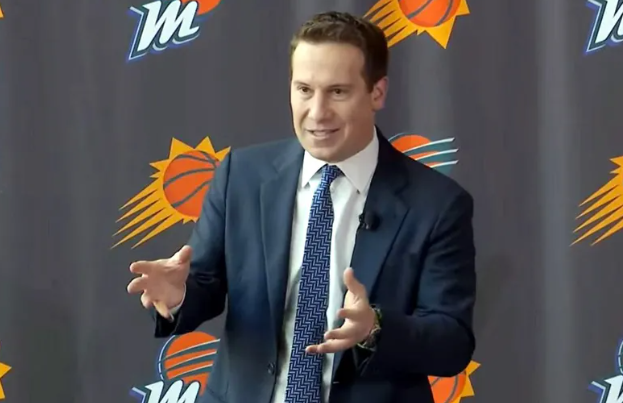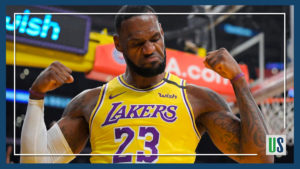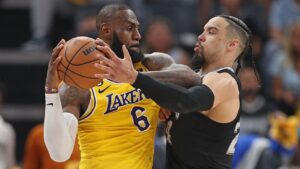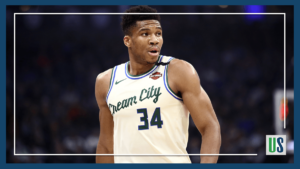
The best ability is availability.
How many of you have heard this phrase in relation to the need for athletes to study the playbook and take care of their bodies?
I’m here to tell you that the benefits of availability don’t just apply to the players on the field or court, but it’s also the most important thing when it comes to the ability to consume what happens on the field or court.
Phoenix Suns owner Mat Ishbia just sacrificed tens of millions of dollars every single year to make sure that his team’s games are available to local fans for free, and it could be the game changer that the entire sports world needs to keep fans from being collateral damage in the war between cable companies and streaming platforms.
To understand why he did this, and why there was a need for him to do this, let’s go back to the beginning.
As social media and streamers started to take attention away from the live TV experience, it became clear to TV executives and advertising agencies that the future of fixed consumer attention was going to be live sports.
This kicked off a nuclear war for broadcast rights, which meant that only a handful of billion dollar national corporations would be able to compete for the ability to show you games. It also meant that local TV corporations were squeezed out of the market, as were people that didn’t have the monthly income to be able to budget for ever-increasing cable bills.
The sales of these broadcast rights end up putting a giant pile of guaranteed money into a pool for the teams in each league to split. Owners loved it for the obvious reason that it rapidly increased their personal wealth, as well as their franchise value- but it also provided them with the stability of an expected income and operating budget.
For the involved and competitive owners, the guaranteed income from broadcast rights gave them ways to innovate and compete- which offset the inconvenience and added expense to the fans.
For the unengaged slumlord weirdos like Donald Sterling, it just meant he got richer while Clippers fans suffered. Which is why the fact Clippers fans exist will never make sense to me, but that’s another rant for another day.
The bottom line is this- as less and less of the operational budget came from local fans, owners were less and less motivated to appease the local fans. Tickets became less affordable. Players became less relatable.
We went from four NBA players making $7+ million per year in 1995, to the Houston Rockets paying John Wall $40 million a year just to stay home. Mike Conley is going to surpass $270 million in career earnings this season and has made one all star game.
And in order to watch John Wall not play, or see Mike Conley put up Jeff Hornacek stat lines for ten times the cost, fans were having to shell out more and more money every single year.
It’s unsustainable, but when you’re profiting from it, there’s no motivation to see things change.
I grew up watching the Lakers on KCal on channel 9. Those were formative experiences for me. Experiences that I know haven’t been available to more and more families who, even if they had the ability to afford cable, are having to make sacrifices to simply pay their increasing grocery bills.
So that’s where Mat Ishbia comes in- when Disney bought 21st Century Fox, they had to sell off the regional sports networks to avoid the government coming down on them for a monopoly.
They auctioned the RSN’s to Diamond Sports Group, a Sinclair Broadcasting company. The pandemic hits, and Sinclair starts to panic. They used billions in debt to buy these networks, and they’re bleeding money. The choices are- declare bankruptcy, or pass the cost to consumers via a streaming platform of their own.
In August of 2022, Diamond Sports Group announced Bally Sports+, which lost $1.2 billion dollars in its first three months of operation.
In February of this year, right before a $140 million dollar interest payment is due, and with $1.8 billion in rights fees owed for the following year, Diamond Sports Group declares bankruptcy, and starts to skip payments to the professional teams it owes money to.
Teams like the Phoenix Suns were faced with a tough choice to negotiate lesser payments in their revenue share agreements- and when you’re talking about millions and millions of dollars, it really seemed like the only choice.
But not only did Mat Ishbia say no, he sold the rights to Gray television, a free basic cable broadcasting company in Arizona, and is giving away free television antennas to anyone in Arizona that requests one.
Get this- The switch to local over-the-air stations will triple the reach of Suns and Mercury games to more than 2.8 million households.
Availability.
As a college football fan, this is both music to my ears, and the most infuriating thing on the planet. The Pac-12 spent the last decade throttling availability in order to preserve and protect its television rights, and the conference died alone in its home like a hoarder surrounded by old newspapers.
Meanwhile the SEC’s deal with CBS, the channel that most televisions just get left on all day in boomer households, resulted in a three billion dollar rights deal with Disney. Is it because it really just means more in the south?
No! It was availability!
Mat Ishbia might be sacrificing tens of millions per year in the short term, but when you invest in your fans, it comes back to you. Hopefully, for the future of sports, and the longterm benefit of everyone, more rich men in suits follow Ishbia’s lead on this.
Let that sink in.







No comment yet, add your voice below!